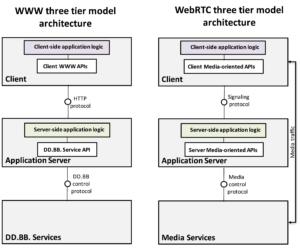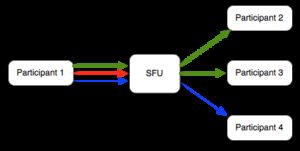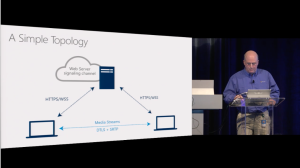WebRTC 1.0 uses SDP for negotiating capabilities between parties. While there are a growing number of objects coming to WebRTC to avoid this protocol from the 90’s , the reality is SDP will be with us for some time. If you want to do things like change codecs or adjust bandwidth limits, then you’re going to need to “munge” […]
Search Results for: codec
WebRTC media servers in the Cloud: lessons learned (Luis López Fernández)
Media servers, server-side media handling devices, continue to be a popular topic of discussion in WebRTC. One reason for this because they are the most complex elements in a VoIP architecture and that lends itself to differing approaches and misunderstandings. Putting WebRTC media servers in the cloud and reliably scaling them is even harder. Fortunately there are […]
Optimizing video quality using Simulcast (Oscar Divorra)
Dealing with multi-party video infrastructure can be pretty daunting. The good news is the technology, products, and standards to enable economical multiparty video in WebRTC has matured quite a bit in the past few years. One of the key underlying technologies enabling some of this change is called simulcast. Simulcast has been an occasional sub-topic […]
Update: Anatomy of a WebRTC SDP (Antón Román)
Session Description Protocol (SDP) is a fundamental, but very unintuitive concept behind how WebRTC works today. Its no wonder that the Anatomy of a WebRTC SDP post and the interactive SDP guide by Quobis CTO, Antón Román has been so popular here on webrtcHacks. With all things WebRTC, things have changed and we were due for an […]
Sharpening the Edge – extended Q&A with Microsoft for RTC devs
Two weeks ago Microsoft’s Bernard Aboba (and former webrtcHack’s interviewee) gave an update on Edge’s ORTC and WebRTC at the Microsoft Build conference. He covered some big topics including VP8 and WebRTC 1.0 support. You can see the update video at the link above or read the follow-up post for details. Then last week Microsoft announced plug-in […]





